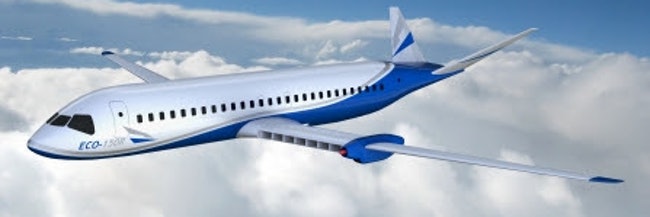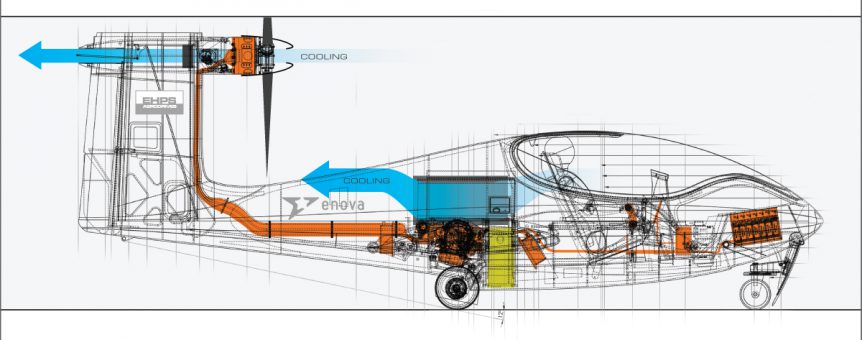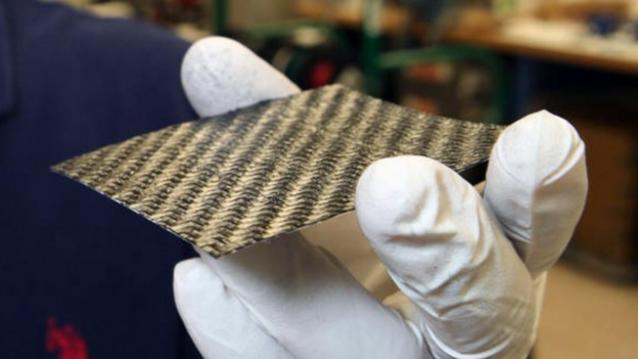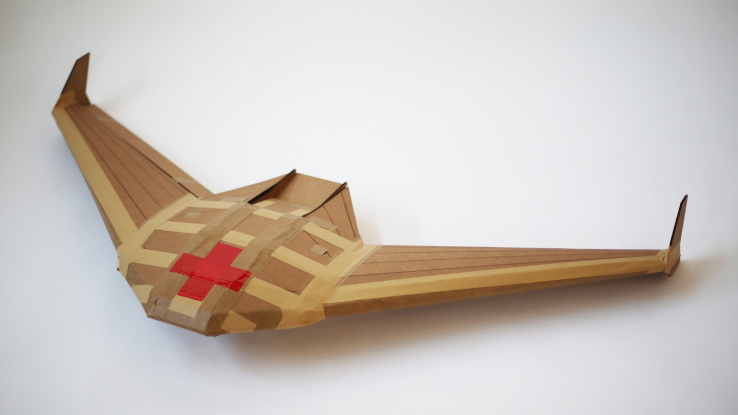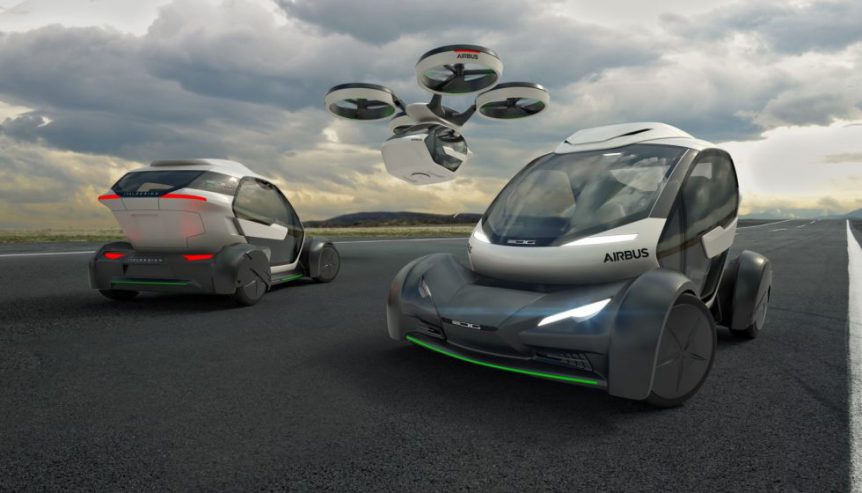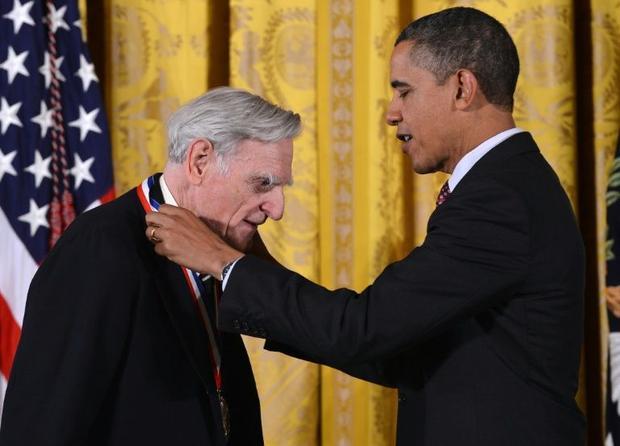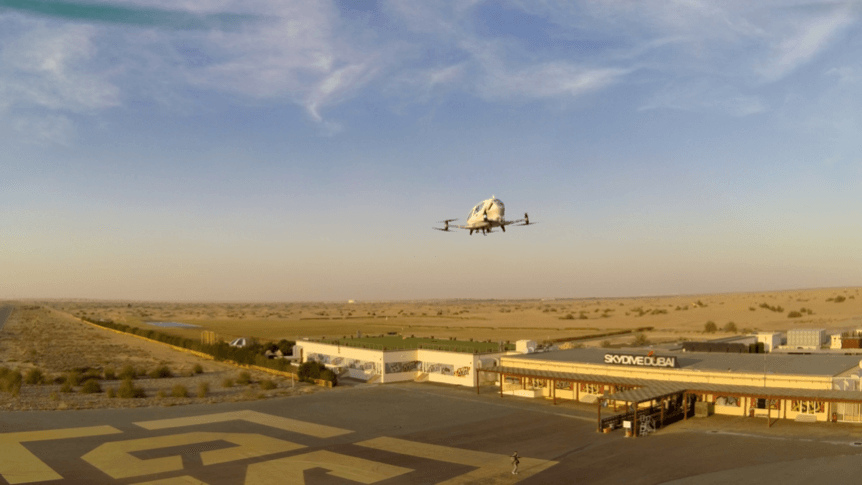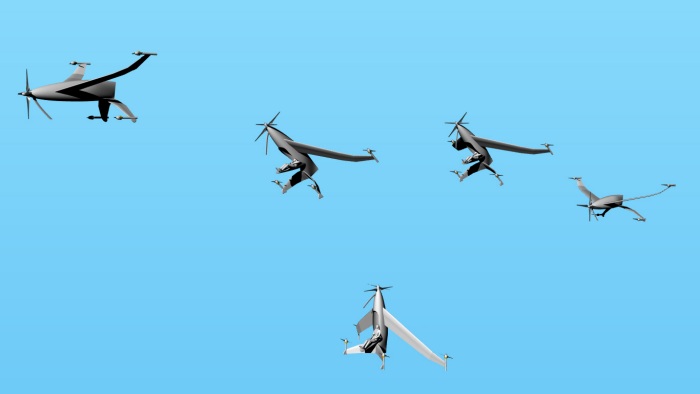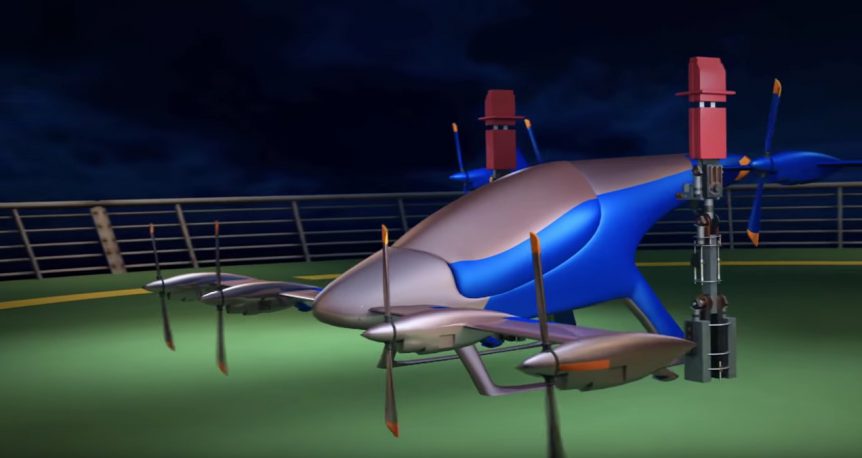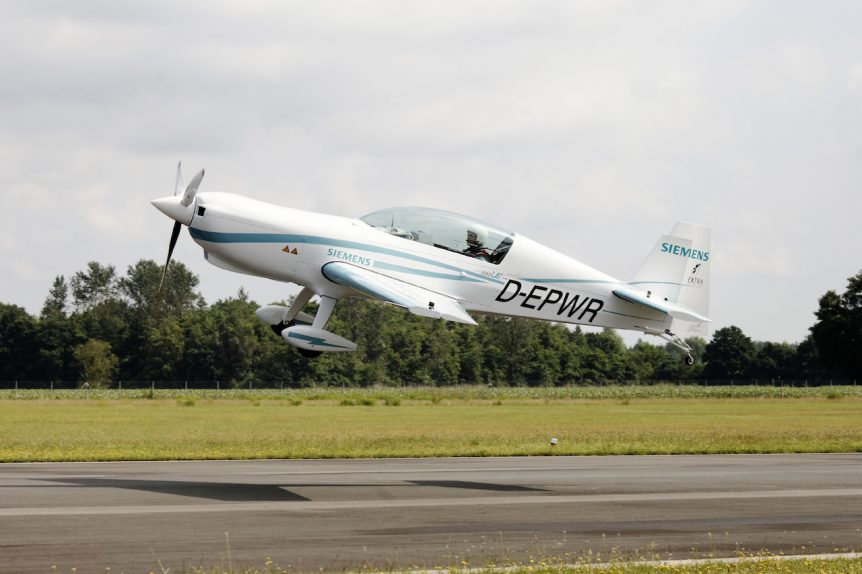Jeff Engler fired up a start-up, Wright Electric, about a year ago. Last week, he presented at the Y Combinator Winter 2017 Demo Day – a semi-annual event where venture capitalists can meet the latest in venturesome mendicants. Tech Crunch describes the firm’s goals, which include electric flights between London and Paris on no fossil fuels – ambitious to say the least. “Wright Electric wants to build the world’s first electric airplane (at least the first 150 seat electric airliner). One of the main reasons airlines like Southwest can offer low fares is that they pre-purchase gas, but Wright sees an opportunity to make flights even cheaper by using electric planes instead. The company is targeting the 30 percent of all flights that are 300 miles or less, and is partnering with EasyJet to start. As technology improves, it believes its planes will be able to go after the $26 billion short-haul flight market.” Jeff has managed to attract a …
Equator P2 Assembled, Ready to Go
Exciting new pictures from Tomas Brodreskift show that his nearly decade-long project has reached a happy completion. The Equator P2, born in the mind of a talented industrial designer, seemed like a nice dream when your editor first saw it in renderings. As one would expect from an accomplished product designer, the aircraft looked wonderful, set in inspiring backgrounds. A Man, A Plan, An Airplane As Tomas’ web site explains, “In 2008 the two Industrial Design students and pilots Tomas Broedreskift and Oeyvind Berven started work on the new EQP2 Xcursion, Equator’s first attempt on the light aircraft market. In this start–up phase the Equator team are working on making project assignments, design briefs, and specified diplomas that can be worked on by students. Therefore we encourage every student with relevant studies and an aerospace dream to join our efforts and in time become part of the new Equator Team that will ultimately bring amphibian flying to a new level. …
CubeSats, Airplanes Made of Batteries?
Dr. Luke Roberson, Dr. Ryan Karkkainen, and Dr. Xiangyang Zhou are now collaborating on “Creating a structural battery material [that] could revolutionize the way NASA operates small payloads.” Batteries now take up 20 to 35 percent of the volume in some CubeSats, 10 centimeters (3.97 inches) ×10 cm. × 11.35 cm (4.47 inches) cubes, as the name implies. Each CubeSat can weight up to 1.33 kilograms (2.93 pounds). Normally made of aluminum, CubeSats carry batteries for communication, storing energy collected from solar cells on their host vehicles, or powering sensors, cameras, and providing environmental norms for science experiments they carry. Obviously, their small size dictates using every square centimeter wisely. Replacing their inert walls with a structural battery could free up invaluable space that would allow “researchers to perform more science,” according to Roberson. Roberson is a senior principal investigator for Flight Research within the Exploration Research and Technology Directorate at NASA’s Kennedy Space Center in Florida. He collaborates with …
Otherlab’s Cardboard Drone – “A Pizza Box… Shaped into a Wing”
A disposable drone that will make a one-way trip to a disaster area won’t add to the suffering if it dissolves within a few weeks of delivering its life-saving cargo. That’s the promise of the “Aerial Platform Supporting Autonomous Resupply Actions” (APSARA), currently being developed by Otherlab, a San Francisco-based group specializing in next-generation creations. Funded by DARPA (the Defense Advanced Research Projects Agency), APSARA is part of their ICARUS program (Inbound, Controlled, Air-Releasable, Unrecoverable Systems). The acronyms are becoming overwhelming. Disposable medical supplies are a commonplace in today’s clinics and hospitals. A recent chat with a nurse elicited her concern that medical supplies were so readily disposable. Latex or nitrile gloves, single-use syringes, and protective paper covers and wraps make up a considerable amount of medical waste each year. The materials have the benefit of being inexpensive, though. That’s part of the thinking behind APSARA. Instead of a costly powered drone that would represent a significant loss if it …
Pop.Up – Airbus Pops Up with Another VTOL Commuter
What will Pop.Up next? We’re floating away, being carried skyward by PAL-V’s, JetPack’s 12-rotor machine, e-volo’s 16-rotor design, and even Hoversurf’s four-rotor flying donor-cycle. At least a half-dozen other varieties of VTOL (vertical takeoff and landing) commuter machines are coming at us with bewildering speed. If nothing else, the competing visions of future aerial transport show some kind of deeply felt need to escape the surly bonds of earth, or at least its eternal gridlock. Airbus has already played one hand, showing its cards with Silicon Valley-based A3 (A Cubed) and a vehicle looking like a combination of NASA’s X-57 Maxwell and Joby Aviation’s S2. It pulled another card from its sleeve this week at the Geneva Auto Show, unveiling its Pop.Up concept vehicle, conceived with ItalDesign. Pop.Up is a carbon-fiber pod that can be attached to self-driving wheels, a railway or Hyperloop link, or lifted by an eight-rotor autonomous drone carrier. An artificial intelligence platform will determine the best …
Safe Rechargeable Solid State Batteries
If the man responsible for co-invention of the lithium-ion battery says he has found ways to make it better while eliminating its less desirable characteristics – we will listen. 94-year-old John Goodenough, professor in the Cockrell School of Engineering at The University of Texas at Austin, says as much. He and researchers including Maria Helena Braga, claim to have created “A low-cost all-solid-state battery that is noncombustible and has a long cycle life (battery life) with a high volumetric energy density and fast rates of charge and discharge.” Their findings can be found in the journal, Energy & Environmental Science. Non-combustibility is a big sales point for those worried about having their vape pipe vaporize their underwear, or having a flight-diverting event on their jetliner. Long cycle life will appeal to people seeing the odometer on their EV turn over in the left-most column. High volumetric energy density will lighten up the car (or airplane) and make it perform better. …
Will Dubai Beat Everyone to Jetson World?
What do you give the country that has everything? Perhaps the world’s first aerial taxi service. An Excess of Riches Dubai is a fabulously rich country, with an air conditioned beach, the world’s largest shopping mall and an indoor ski center complete with a good base and a layer of powder. Disappointingly, it’s only the third largest indoor skiing area in the world. The largest is in the Netherlands, with the second largest in Germany. At least those countries don’t have to overcome the desert’s heat to drop the temperature below freezing. Visitors to Dubai can be excused for wanting to commute between these tourist attractions in an equally extravagant way. Buzzing down on them in an eHang 184 passenger-carrying drone will ensure a grand entrance. An Associated Press report says the Dubai officials are already pushing forward on test flights. “Mattar al-Tayer, the head of Dubai’s Roads & Transportation Agency (RTA), announced plans to have the craft regularly flying at …
Dale Kramer’s VLazair – Swinging a Different Way
Dale Kramer’s Lazair was one of the most popular ultralights in the 1980s, selling over 1,200 units. He re-engineered it a decade ago and flew the electrically-powered version in both land and amphibious versions. Appearances at AirVenture saw him making daily flights over the area. Your editor was privileged to visit Dale’s home, once owned by Glenn Hammond Curtis in Hammondsport – who also flew his creations from Keuka Lake, one of New York’s Finger Lakes for which the region is named. Ever an inventive soul, Dale has returned to the drawing board, in his own way answering the question of how to perform vertical takeoffs and landings in a small, light, personal aircraft. To overcome pilot’s getting cricks in their necks, The VLazair has a constant-frame-of-reference seat. The seat swings around during takeoffs and landings to keep the pilot upright, avoiding the rear-view mirror technique used in previous such craft from Convair and Lockheed. VLazair will have a 100-horsepower Rotax …
NASA’s Mark Moore Joins Uber
You must really be somebody when Fortune Magazine notices you’re taking a new job. Mark Moore is indeed somebody, and remarkably self-confident in leaving a 30-year NASA career to sign on to a startup – even if it is run by Uber. He will be Director of Aviation for the on-demand ride company, tackling the problems inherent in taking such services into the third dimension. His decade-long work in electric propulsion for aircraft has led him to conceive of some interesting possibilities for Personal Air Vehicles, a term he engaged early. His Puffin vertical takeoff and landing vehicle, for instance, seemed to use elements of Lockheed’s XFV-1 Pogo and Aerovironment’s Sky Tote – both tail sitters. Ben Rich’s book, Skunk Works, details the problems pilots “faced” while trying to land the Pogo on its tail lying on their backs and looking straight up. Moore’s design allowed the pilot to take off and land while standing upright, and then transitioning to …
Record for Siemens, Extra Electric Time-to-Climb
Time-to-Climb is a tough record to beat, requiring an airplane with an excess of power, a skilled pilot, and just the right weather. Your editor was supremely lucky a few years ago to meet Bruce Bohannon, holder of 25 records, including altitude and TTC marks to 20,000, 30,000 and 40,000 feet. He managed these records in a modified Van’s RV-4 with a Lycoming IO-540 engine pumping out a nitrous-oxide assisted 425 horsepower. The normal gross weight of an RV-4 is 1,500 pounds, for a power loading of 8.33 pounds per horsepower with a 180-horsepower engine. Since the RV-4 normally flies with 180 to 200 horsepower, the additional 225 ponies helped Bohannon achieve some big numbers. His rate of climb to 3,000 meters (9,842 feet) was 4,407 feet per minute, besting the P-51D’s 3,600 feet per minute or the F-8-F Bearcat’s 4,500 feet per minute. An IO-540 weighs 199 kilograms, or 438 pounds (depending on configuration and accessories. An O-360 with 200 …

